Exploring the Art of Illumination in Gardens
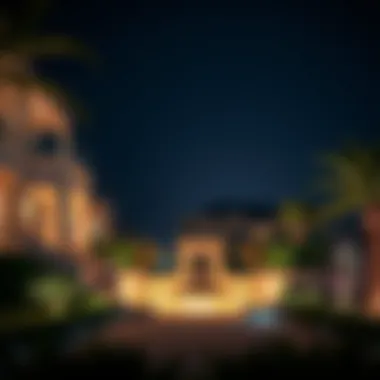

Intro
In the shimmering landscape of Dubai, where the desert meets innovation, the concept of gardens has transcended traditional boundaries. One prime illustration of this transformation is حديقة الاضواء. Envisioned as not just a sanctuary of flora, this garden serves as a beacon of exploration into the fascinating world of outdoor lighting design. As cities evolve, the layers of creativity, technology, and sustainability in urban gardening become paramount. The intricate dance between artificial illumination and our natural surroundings can reshape not only how we perceive beauty in these spaces but also how they function within urban life.
As we journey through an analysis of حديقة الاضواء, we aim to uncover the motivations behind its design philosophy, the technological advancements that bring its illumination to life, and its wider implications for urban planning and landscape architecture. With insights tailored for homebuyers, investors, and real estate analysts, we seek to enrich your understanding of how this phenominal garden stands as a potential model for future developments in urban gardening in the heart of a glimmering metropolis. Through this essay, we illuminate not only the garden itself but also the vital role of light in enhancing both aesthetic allure and the functionality of urban landscapes.
Foreword to حديقة الاضواء
The illumination of gardens is not merely about aesthetics; it encapsulates the essence of enhancing our connection with nature while optimizing urban environments. حديقة الاضواء stands as a remarkable example of this philosophy, merging light with landscaping to create an experience that transcends the typical boundaries of a garden. The role of light is paramount, influencing how we perceive and interact with spaces that are often perceived as static and solely natural.
This section aims to shed light on the foundational aspects of حديقة الاضواء, which is more than a garden; it is an innovative space that fosters community engagement and ecological awareness. The design principles governing the arrangement of light and flora are fundamental to its success. By providing insight into the intricate designs and the thought processes behind the concept, we can appreciate the larger implications this holds for both urban planners and local communities.
Understanding the Concept
Understanding حديقة الاضواء begins with an acknowledgment of how light operates in tandem with the natural elements around it. The garden is more than just light fixtures strewn about; it is a carefully curated blend of illumination and ecological harmony that promotes an enhanced sensory experience. Essentially, the garden speaks the language of light: each ray finds a floral companion, each shadow dances with foliage.
Here, light acts as the painting brush, detailing the textures, colors, and shapes within the garden. When night falls, the garden does not simply fade into darkness; instead, it transforms into a spectacle woven with innovation and artistry. Visitors can experience various moods and atmospheres, enabling reflection, celebration, or quiet contemplation.
Notably, this concept addresses functional aspects, prioritizing safety and accessibility as well. Illuminating pathways and key features encourages exploration and lingering, fostering a connection among visitors. Ultimately, the essence of حديقة الاضواء is the symbiosis of light and nature, creating spaces that inspire and invigorate.
Historical Context
Taking a step back, the historical roots of illuminated gardens provide further context to their contemporary significance. Historically, gardens have always been places of tranquility and beauty. However, it was during the Renaissance that the first inklings of incorporating artificial light into garden design emerged. These were, of course, simpler times, relying on lanterns and torches.
Fast forward to the modern era, where technological advancements have revolutionized the way we approach garden illumination. In urban settings, the need to adapt traditional concepts with modern innovations became evident. Cities began to recognize gardens as precious green spaces pivotal to urban living, especially with lights that highlight their natural beauty during the night hours. Furthermore, these developments often reflect cultural sentiments, a testament to our commitment to eco-friendly practices and sustainable design.
"Illuminated gardens are not just for beauty; they are essential to forging deeper community bonds and promoting urban biodiversity." This perspective strengthens the argument for integrating such gardens in city planning, as they serve not only as aesthetic enhancements but also as platforms for community building and environmental conservation.
In conclusion, understanding the relevance of حديقة الاضواء involves recognizing its conceptual underpinnings and historical context. By intertwining these aspects, we can better appreciate the garden’s role in transforming urban landscapes and furthering ecological initiatives.
The Design Philosophy Behind حديقة الاضواء
The design philosophy behind حديقة الاضواء is a confluence of art, nature, and technology, where every light and shadow is carefully orchestrated to convey a sense of harmony and tranquility. Its significance cannot be understated as it acts as a blueprint for integration of illumination into landscape design, guiding urban planners and architects alike. In a world where urban chaos reigns, this garden offers a retreat, bringing a sense of balance. Here, aesthetics merge with functionality, providing visitors an enhanced experience.
Symbiosis of Light and Landscape
In حكيوة الضوء, the relationship between light and landscape goes beyond mere aesthetics. It is a mutualism—where each element supports and enhances the other. Thoughtfully placed lights highlight the unique contours of plants and trees, revealing textures that might otherwise go unnoticed. The interplay creates an enchanting visual experience, particularly at twilight, when colors shift and dance.
Some key elements in this symbiotic relationship include:
- Layering of Light: Different types of lighting serve to create depth. Uplights accentuate tall trees, while downlights provide soft illumination to pathways.
- Directionality: The angle from which light is cast dramatically changes the mood of a space. Determine the time of day; shadows can suggest intimacy or expansiveness.
- Natural Integration: Lights are integrated into the environment, often camouflaged within foliage or subtly embedded in walkways, ensuring that the impact on the natural landscape remains minimal.
The benefits of this thoughtful design approach are multifaceted. They include enhancing safety as well as promoting exploration within the garden. Moreover, such effects invite visitors to linger, encouraging social interactions and fostering community ties.
Cultural Significance of Illumination
Illumination in حديقة الاضواء is not merely functional but deeply cultural, serving as a reflection of the society that engages with it. Throughout history, light has held various meanings in different cultures; it symbolizes enlightenment, spiritual awakening, and connection. Gardens illuminated with intent become spaces for reflection and gatherings, bridging cultures and ideas.
Cultural aspects to consider include:
- Traditional Practices: Many cultures celebrate light as part of festivals. In the context of a garden, choosen lighting can coincide with events such as harvest festivals or community gatherings.
- Symbolism of Light: The illumination symbolizes hope and growth, a metaphor for diversity in a community. It offers a visual representation of unity, showcasing various plants and flowers from different cultural backgrounds.
- Artistic Expression: Artists often use light as a medium for expression, turning the garden into an evolving canvas where shadows play and colors transform according to the audience's interactions.
By embracing these cultural significances, حديقة الاضواء establishes itself not only as a serene escape but also as an emblem of collective identity, fostering connections that bind people together. This focus on illumination intertwines beautifully with the principles of landscape architecture, making it a versatile space for not just enjoyment, but personal and social enrichment.
Technological Innovations in Garden Illumination
The realm of garden illumination has evolved significantly with the advent of new technologies. This section focuses on how recent innovations have reshaped the way we approach lighting in outdoor spaces, enhancing aesthetic appeal and ensuring functionality. By embracing technology, gardens have transformed from mere patches of greenery into vibrant showcases of art and nature, often acting as focal points in urban landscapes.
LED Versus Traditional Lighting
When it comes to lighting choices, the debate between LED and traditional incandescent bulbs is ongoing. Understanding the distinct advantages of LED technology can illuminate its growing popularity.
- Energy Efficiency: LED lights consume significantly less energy than their traditional counterparts, translating into lower electricity bills and reduced environmental impact. This efficiency is essential in high-demand environments like public gardens.
- Longevity: A typical LED can last up to 25,000 hours or more, compared to the mere 1,000 hours for incandescent bulbs. This longevity not only contributes to cost savings but also reduces the frequency of replacements, lessening material waste.
- Color Variety and Control: With LEDs, designers can play with an astonishing palette of colors, including vivid hues that can adjust according to seasons or events. This versatility allows for dynamic displays that engage visitors continually.
- Instantaneous Lighting: Unlike traditional lighting, which may require a warm-up time, LEDs provide instant illumination. This feature helps in creating precise light points without lag, which is crucial in design.
However, it is pertinent to consider the aesthetic quality of light. Often critics note that the harshness of LED can sometimes detract from the natural ambiance of a garden. Designers are now finding ways to counteract this by utilizing diffusers and specialized lens designs to soften the glow, creating a more inviting atmosphere.
"The increasing use of LEDs in garden illumination is not just about efficiency; it’s about redefining outdoor experiences."
Automation and Smart Lighting Solutions
Automation is quickly becoming a game changer in garden lighting systems. Here’s how technological integration is making waves:


- Smart Control Systems: With the rise of smart technology, garden lights can be managed remotely via smartphones or tablets. Users can control brightness, color, and timing, allowing for a tailor-made ambiance that enhances visibility and mood.
- Sensors and Timers: Modern lighting systems often utilize motion sensors and timers to ensure lights are only operational when needed. For instance, a sensor can activate illumination as twilight sets in, or when foot traffic is detected. This automated approach not only saves energy but also improves safety for evening strolls.
- Integration with Home Systems: Smart garden lights can integrate seamlessly with broader smart home networks. Homeowners can schedule lighting to coordinate with external conditions, such as sunset times. Additionally, voice control options add another layer of convenience.
- Data Analytics: Some advanced systems offer data tracking about usage patterns, helping property owners make informed decisions about energy consumption and lighting design adjustments.
The future of garden illumination isn't just enclosed in physical structures; it's woven into the digital fabric, responding to both environmental cues and user preferences. This opens up pathways for continuous evolution, where designs are not only visual but also intuitive, catering to both beauty and practicality in urban living.
Architectural Integration in حديقة الاضواء
The concept of architectural integration within حديقة الاضواء is pivotal as it seeks to create a harmonious relationship between the landscape and the structures that punctuate it. This relationship isn't just about aesthetics; it fundamentally affects the functionality and experience of the park. Incorporating thoughtful design choices allows for a seamless transition between natural elements and built environments, resulting in a space that feels coherent and inviting.
When discussing architectural integration, various elements come into play. These include pathways, seating areas, and even buildings that complement the garden's design. The careful selection of materials is also a major consideration. For instance, using natural stone or wood can help these structures to blend more effectively with the greenery that surrounds them, creating an inviting atmosphere.
"A space that respects both nature and engineering has the potential to enhance our emotional connection to the environment."
Blending Natural and Manmade Elements
Creating a balance between natural and manmade elements is essential in حديقة الاضواء. Nature offers unique beauty, from the verdant canopy of trees to vibrant flowerbeds. Manmade structures, like benches or observation platforms, can enhance the visitor's experience without detracting from this. By integrating these two components, designers foster a welcoming environment that embraces both the tranquility of nature and the conveniences of human innovation.
Consider the strategic placement of light fixtures within the park; they serve not only a functional purpose but also act as art installations when designed properly. For instance, trot along the paths lined with luminaire that mimics the soft glow of the moonlight, guiding wanderers while accentuating the contours and textures of the landscape. Well-placed seating areas encourage visitors to pause and enjoy the beauty around them, becoming part of the garden’s story.
Landscaping Techniques for Optimal Illumination
Landscaping techniques employed in حديقة الاضواء should be meticulously planned to achieve optimal illumination. This entails an understanding of how lighting can influence the ways in which space is perceived and enjoyed at night.
Key techniques include:
- Layered Lighting: Mixing ambient, task, and accent lighting can create depth and intrigue, which is essential for highlighting various features.
- Strategic Planting: The placement of trees and shrubs can either enhance or obstruct light. Selecting the right plant species that allow light to filter through can amplify the overall experience.
- Reflective Surfaces: Incorporating mirrors or reflective materials helps in bouncing light, making spaces feel larger and more luminous.
By allowing natural features to dictate the architectural layout, and vice versa, designers not only enhance the visual appeal but also create a unique functionality that respects the environment. This can positively impact urban living, making places like حديقة الاضواء not just a haven of beauty, but also a testament to sustainable living.
The Impact of حديقة الاضواء on Urban Living
The importance of حديقة الاضواء in shaping urban environments cannot be overstated. Often regarded as a beacon of modern city planning, this garden transcends the traditional perception of parks. It is not merely a splash of greenery amidst concrete but a vibrant ecosystem that plays a crucial role in enhancing the quality of life for residents and visitors alike. When one delves into its significance, several elements come to the forefront, showcasing how the حديقة الاضواء fosters urban harmony and community identity.
Enhancing Community Spaces
One of the most compelling aspects of حديقة الاضواء is its ability to serve as a community hub. Parks and gardens have historically acted as the heart of neighborhoods, bringing people together and providing spaces for social interaction. حديقة الاضواء elevates this function by integrating artful illumination into its design.
- Gathering Point: Friends and families can be found enjoying picnics on the lawn or participating in events held in the garden. The illuminated pathways encourage strolls in the evening, fostering spontaneous interactions among strangers. It becomes a place where community ties are strengthened.
- Cultural Activities: The garden is not just a quiet escape; it hosts concerts, festivals, and art exhibitions. The enchanting glow of lights adds an element of magic to such gatherings, attracting diverse crowds and promoting cultural exchange.
- Safety and Security: Well-lit areas have been shown to deter crime. The strategic placement of lighting helps create a secure environment for everyone, allowing residents to wander freely even in the darker hours.
Promoting Local Biodiversity
The حديقة الاضواء embodies a commitment to ecological balance within an urban context. This dedication can be seen in several ways that enhance local biodiversity, crucial for a thriving urban ecosystem.
- Floral and Faunal Diversity: By cultivating a rich tapestry of native plants and flowers, the garden supports various species, from pollinators like bees and butterflies to small birds and even urban wildlife. The ecosystem thrives under the strategic use of illumination that attracts essential nocturnal species.
- Educational Efforts: Dedicated spaces within the garden serve as outdoor classrooms, where visitors can learn about local flora and fauna. Programs can be implemented to encourage citizens, especially children, to engage with nature. Learning fosters stewardship and a deeper appreciation for the environment.
- Sustainable Practices: The use of eco-friendly materials for lighting and landscaping techniques minimizes the garden's carbon footprint. By employing renewable energy sources such as solar-powered lights, حديقة الاضواء reinforces the importance of sustainable living while illuminating the beauty of nature alive.
"A lively garden like حديقة الاضواء not only beautifies the urban landscape but also cultivates community spirit and ecological understanding."
Sustainability Practices in Garden Lighting
The notion of sustainability in garden lighting revolves around the careful selection and implementation of practices that minimize environmental impact while maximizing the benefits associated with well-designed illuminated landscapes. In a world where the echo of global warming is increasingly pronounced, integrating sustainable lighting solutions in gardens becomes not just a benefit but a necessity. The focus on sustainability in حديقة الاضواء emphasizes enhancing the beauty of the garden without leaving a large carbon footprint, thus setting a precedent for future developments in urban gardening.
A rounded approach to sustainability often encompasses several critical elements including the choice of materials, energy consumption, and the lifecycle of lighting fixtures. Each of these factors contributes significantly to the overall sustainability of garden lighting.
- Materials used in lighting fixtures should be eco-friendly, meaning they derive from renewable resources or recycled components, significantly reducing waste production. For instance, fixtures made of reclaimed wood or recycled aluminum have become increasingly popular. Utilizing materials like these fosters a circular economy and supports local artisans and manufacturers.
- Energy consumption, another crucial aspect, calls for the adoption of energy-efficient technologies. The goal is to reduce the electricity demand and environmental impacts typically associated with conventional lighting systems. By focusing on efficiency, gardens that utilize low-energy lighting solutions stand to benefit from lower operational costs and reduced greenhouse gas emissions.
- The lifecycle assessment of lighting products must also be considered. This involves evaluating not just the production and installation of lighting but also its long-term usage and end-of-life disposability. Choosing products that can be recycled or repurposed at the end of their use minimizes landfill waste.
Ultimately, sustainability in garden lighting translates into a holistic approach that prioritizes ecological considerations without compromising aesthetic appeal. This not only enhances the beauty of gardens but also fosters a community-focused environment where people can enjoy nature responsibly.
"A sustainable garden is not just about the plants; it’s about every aspect, including how those plants are illuminated."
Eco-friendly Materials and Techniques
In the context of eco-friendly materials, حديقة الاضواء showcases that every choice counts. The selection of sustainable materials extends beyond the lighting fixtures themselves.
For instance:
- Using solar-powered LED lights greatly reduces dependence on non-renewable energy sources. These fixtures store energy from the sun during the day and illuminate the garden at night without drawing from the grid.
- Implementing biodegradable components and fixtures designed for easy disassembly ensures that the garden minimizes its ecological footprint. Materials such as natural wood or biodegradable plastics are not only aesthetically pleasing, they break down in the environment, leaving no harsh byproducts.
Alongside materials, techniques such as low-voltage wiring systems can significantly reduce energy waste, directing less energy through longer distances and ensuring that more light reaches the intended spaces.
Energy Efficiency in Garden Design
Energy efficiency within the realm of garden design is an essential pillar of the sustainable approach. Implementing energy-efficient lighting solutions is paramount.
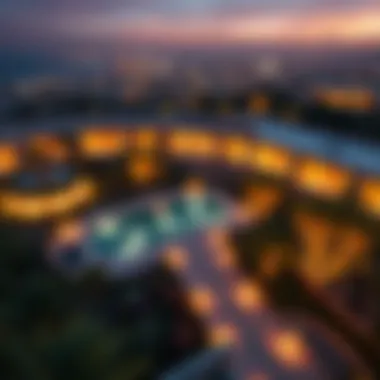
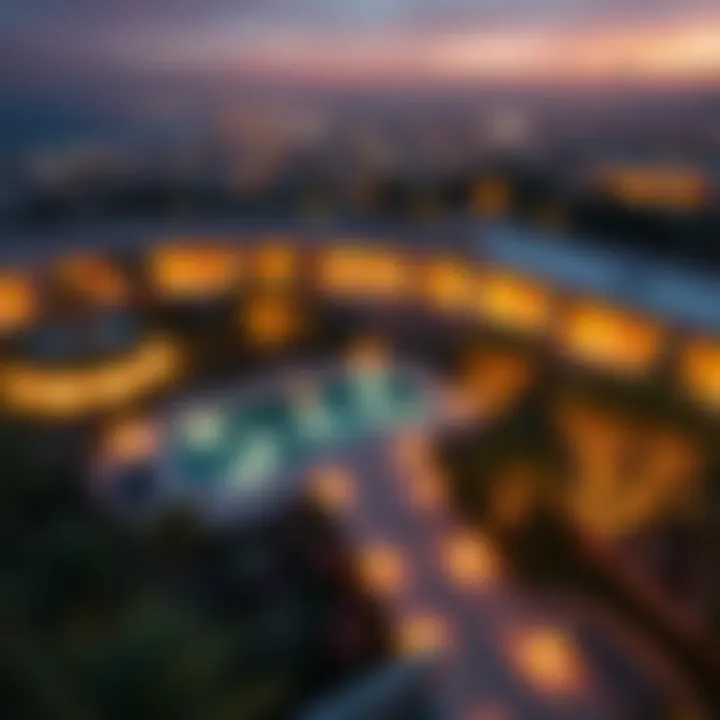
Key aspects include:
- Smart lighting systems that adjust brightness according to ambient light. This technology allows lights to dim during twilight or in response to natural light, conserving energy.
- Motion sensors can be deployed strategically throughout gardens. Movement detction means lights only activate when needed, preventing unnecessary energy usage and ensuring longevity of bulbs.
- Lastly, proper placement of lights facilitates an even distribution of illumination while avoiding hotspots and dark areas. By avoiding excessive lighting, energy consumption is kept in check, marrying functionality with sustainability.
In summary, the practices surrounding sustainability in garden lighting create a legacy for future urban spaces, aligning with the shifting paradigms towards an eco-conscious future. As the importance of these practices becomes increasingly acute, the insights gained from حديقة الاضواء might very well inform and inspire similar initiatives globally.
Visitor Experience at حديقة الاضواء
The experience of visitors at حديقة الاضواء goes beyond mere visual consumption; it encompasses a multi-sensory journey where light dances with shadows and plants whisper stories of their very existence. This aspect of the garden is crucial, as it highlights how design not only beautifies urban spaces but also transforms them into narratives that engage people on different levels.
Sensory Engagement Through Light
In حديقة الاضواء, light is not just a tool for visibility, but a vibrant participant in the storytelling of the landscape. The integration of innovative lighting techniques serves several purposes. Firstly, the dynamic interaction between light and foliage creates a visual spectacle. Trees and flowers, illuminated with subtle hues or vibrant bursts, evoke emotions and create an enchanting atmosphere. Visitors often find themselves lost in this captivating interplay, enhancing their overall experience.
Moreover, specific areas within the garden utilize targeted lighting to highlight particular plants or sculptures, guiding visitors along a curated path. This curatorial approach can stir curiosity, inviting visitors to explore deeper into the garden’s enchanting realm. The soft glow of lights mimics the natural changes in light throughout the day, allowing people to bridge their connection to nature—taking note of the passing time as the sun sets and the garden transforms into a glowing paradise.
Benefits of Sensory Engagement:
- Increases emotional connection to nature.
- Encourages longer stays, hence promoting social interactions.
- Provides a calming or invigorating ambiance, suitable for various activities.
Educational Opportunities for Visitors
Aside from sensational visuals, حديقة الاضواء also opens the door wide to educational experiences. The garden acts as a living classroom, where visitors can learn about sustainability, local flora, and even technology in garden design. Guided tours would often touch upon the science behind light placement and the benefits of diverse plant species, transforming an ordinary visit into an enlightening experience.
Workshops and interactive exhibits can serve as platforms for teaching about the importance of ecological balance and conservation. For instance, kids can participate in hands-on activities, learning how certain light can affect plant growth, while adults might engage in discussions about energy-efficient lighting solutions.
"Gardens serve as a microcosm; an exploration of them offers insights not just into horticulture but the very rhythms of life which sustain our communities."
Educational Features to Take Note Of:
- Interactive educational installations to engage visitors of all ages.
- Workshops focusing on sustainable gardening practices.
- Informational signage that narrates the ecological importance of each installation.
Thus, through sensory engagement and educational opportunities, حديقة الاضواء becomes a haven that informs and inspires, weaving the stories of light, plant life, and community together. This multifaceted approach not only appeals to individual visitors but also strengthens community ties, providing a fertile ground for both personal growth and collective knowledge.
The Role of حديقة الاضواء in Real Estate Development
The presence and design of حديقة الاضواء play a pivotal role in reshaping the real estate landscape in urban areas, especially in a vibrant city like Dubai. With its stunning illumination and unique blend of nature and technology, this garden does not merely serve as a visual wonder; it profoundly influences the value of nearby properties. The relationship between real estate and a well-planned garden like حديقة الاضواء is multifaceted and warrants a closer examination.
Influencing Property Values
Illuminated parks and gardens are increasingly recognized for their capacity to enhance property values. A well-maintained and aesthetically pleasing garden boosts the surrounding neighborhood's appeal, fostering a sense of community while simultaneously attracting potential buyers. The visual charm of حديقة الاضواء translates to a premium for adjacent properties. Factors include:
- Increased Demand: Proximity to attractive outdoor spaces often leads to higher demand for homes and commercial properties.
- Enhanced Quality of Life: Access to picturesque landscapes contributes to a better living experience, which is a significant factor for buyers.
- Long-term Investment: Properties nearby such amenities are seen as long-term investments, often appreciating in value significantly over time.
Often, developers and investors factor in landscaping and illumination as essential elements when evaluating real estate ventures. Having a stunning feature like حديقة الاضواء nearby isn’t just a luxury; it’s a necessity in our ever-evolving urban environment.
"The aesthetic appeal of a garden can elevate the real estate market far beyond mere numbers."
Attracting Investors and Businesses
The significance of حديقة الاضواء extends further, aligning itself strategically with the interests of investors and businesses. Its glowing prominence serves as a magnet for commercial enterprises by providing both a recreational and visual setting that appeals to residents and tourists alike.
- Business Opportunities: Local businesses benefit from the foot traffic generated by visitors to the garden, often resulting in increased sales.
- Corporate Interest: Companies looking for office space prefer options near attractive recreational areas, knowing it attracts talent and promotes employee well-being.
- Civic Collaboration: The garden fosters collaboration between government and private sectors, encouraging developments that prioritize aesthetics alongside practicality.
Investors see the value in properties that are neighbors to lively urban parks like حديقة الاضواء. The blend of nature's creativity with innovative design opens new avenues for business and retail, promising not just growth but sustainability in urban settings.
In summary, حديقة الاضواء serves as more than just a delightful park; it is a catalyst for real estate development. The mutual relationship formed with surrounding properties can lead to enhanced values, increased demand, and a vibrant local economy. As urban landscapes continue to evolve, integrating beautiful, well-illuminated gardens into planning will undoubtedly become a fundamental practice for developers and business owners.
Comparative Analysis with Other Global Light Parks
Understanding the role of illumination in gardens can be enriched by looking beyond local examples and learning from global practices. While حديقة الاضواء stands as a captivating example of light-infused landscape design, comparing it to other light parks around the world can unveil both innovative techniques and cultural expressions that may add dimension to its concept. This comparative analysis is essential, as it underscores the universal principles of lighting while also respecting local traditions and values.
Through this lens, we can appreciate how different regions utilize light to draw in visitors, enhance urban spaces, and reflect their cultural heritage. Notably, unique features found in light parks across various countries can be adapted or adopted for حديقة الاضواء, developing a further visual and experiential narrative that connects people to the environment in new ways.
Learning from International Examples
Many global light parks have established themselves as beacon of creativity and inspiration in the field of garden illumination. These venues often blend technology with artistry in ways that captivate visitors. For instance:
- Festival of Lights in Lyon, France, showcases light installations that transform mundane buildings into stunning canvases.
- Nanjing’s Light Park in China uses illuminated flora, creating a vibrant display of natural beauty and artistry.
- Vivid Sydney employs projections across landmarks that encourage exploration and engagement with the city.
These international examples shed light (no pun intended) on various deep-rooted philosophies regarding illumination in nature. They often inspire their local cultural narratives while simultaneously providing a rich tapestry of experiences for visitors.
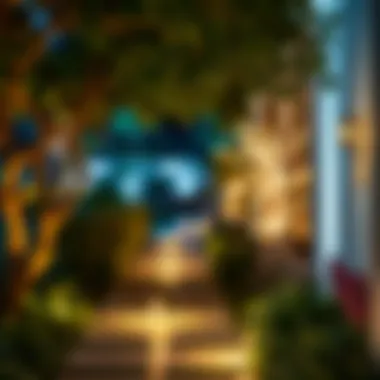
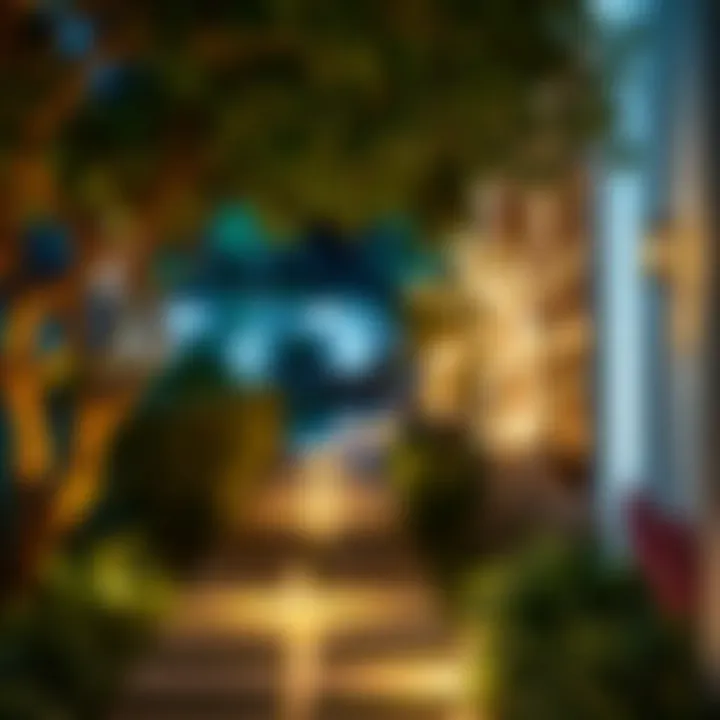
Identifying Unique Features of حديقة الاضواء
Just as other light parks contribute distinct interpretations of lighting and nature, حديقة الاضواء harnesses its unique characteristics to create a mesmerizing experience. Among its standout features are:
- Integration of Local Flora: Using native plants ensures that the illumination complements local biodiversity, enhancing the existing ecosystem.
- Interactive Installations: Light-based installations not only dazzle but can also engage visitors through interaction, fostering a deeper connection with the gardens.
- Cultural Touchpoints: Illuminated art pieces that narrate local stories or reflect the history of the region guide visitors through both time and space.
When considering these distinct features, it becomes clear that حديقة الاضواء doesn't merely exhibit lights; it uses them as a storytelling medium. This unique narrative not only enriches the visitor experience but also positions the garden as a cultural landmark in urban landscaping.
In summary, by learning from other light parks and identifying unique traits within حديقة الاضواء, a broader understanding of illumination's role in enhancing both natural landscapes and urban environments emerges. This synergy sets the tone for its future, where innovation merges with tradition.
Challenges and Opportunities in the Development of حديقة الاضواء
The creation of حديقة الاضواء is not merely a design endeavor; it’s a complex interplay of creativity, technology, and community engagement. While the vision of a breathtaking illuminated garden paints a rosy picture, the reality is fraught with several challenges that must be navigated carefully. However, with these challenges come a plethora of opportunities that can pave the way for innovative solutions and advancements in urban landscaping.
The significance of addressing these challenges lies not just in overcoming obstacles, but in harnessing them to enhance the project’s overall impact. Understanding these elements will help illuminate the paths forward while ensuring that we don’t just create aesthetic beauty, but also a sustainable and functional space for the community.
Addressing Environmental Concerns
The environmental implications of garden illumination extend far beyond the mere installation of lights. When considering the development of حديقة الاضواء, several concerns arise:
- Light Pollution: Proper planning is essential to limit light that bleeds into the night sky. This disrupts local wildlife and can interfere with the natural rhythms of animals that inhabit the area. Using adaptive and controlled lighting systems can mitigate such effects.
- Energy Consumption: It's crucial to choose energy-efficient solutions that align with sustainable practices. With advancements in solar panel technology and the use of LED systems, designers can harness renewable energy sources to power installations without putting undue stress on local power grids.
- Native Flora and Fauna: Light can affect plant growth patterns and animal behaviors. Therefore, it's vital to grasp how illumination affects local ecosystems. Thoughtful placement of lighting can support healthier habitats, encouraging pollinators and other beneficial species.
"Sustainable design is not just about being eco-friendly; it's about integrating seamlessly into the existing environment, promoting growth and coexistence."
Recognizing these environmental hurdles is the first step toward crafting solutions that not only enrich the garden but also serve as a model for future urban projects.
Navigating Regulatory Frameworks
The regulatory landscape surrounding garden design and illumination can be a tangled web to navigate. In the case of حديقة الاضواء, understanding and adhering to local regulations is imperative for successful development. This can include:
- Zoning Laws: Local zoning regulations can dictate what types of lighting are permissible in certain areas, along with noise levels and hours of operation. Familiarizing oneself with these rules can save time and hassle in the long run.
- Building Codes: Compliance with safety standards is critical. These codes may stipulate how electrical wiring must be installed, types of fixtures used, and guidelines for energy consumption.
- Environmental Regulations: Various governmental bodies may impose specific environmental safeguards concerning light usage and its impact on local ecology. Engaging with environmental agencies early in planning can help avoid potential legal roadblocks later.
By understanding and working within these frameworks, the development of حديقة الاضواء can emerge not just as a project but as a community-centric initiative that respects both human experience and environmental integrity. The process of navigating regulations can indeed be a challenge, but embracing it opens doors to collaboration with local authorities and community stakeholders, ultimately enhancing the project's legitimacy and support.
Future Prospects for حديقة الاضواء
The landscape of garden design is constantly evolving, and the future of حديقة الاضواء is especially promising. This section explores the potential growth and the innovative concepts that could manifest in this vibrant space. By examining these prospects, we highlight the importance of maintaining a forward-thinking approach in urban gardening and landscape illumination.
Potential for Expansion
As urban spaces grow and technology advances, the potential for expanding حديقة الاضواء is more evident than ever. Here are some key areas that could drive this expansion:
- Vertical Gardens: With land becoming scarce, vertical gardening offers a way to utilize urban spaces efficiently. This could be integrated into حديقة الاضواء, maximizing the available area for plant life while adding more levels of light installation.
- Increased Community Engagement: Hosting workshops and events could not only expand the park’s popularity but also enhance community engagement. By including educational programs focusing on sustainability and horticulture, the garden could become a hub for urban gardening enthusiasts.
- Integration with Smart Cities: The idea of smart cities is on everyone's lips. Incorporating IoT technology for monitoring plant health and optimizing lighting setups in حديقة الاضواء could set a new standard for garden design.
In light of these possibilities, one wonders how far the scope of حديقة الاضواء could reach. Proper planning and foresight are crucial to leveraging these potential expansions effectively.
Innovative Concepts on the Horizon
The future isn’t just about physical expansion; it’s also about creativity and innovation in design and technology. Here are some concepts that could revolutionize حديقة الاضواء:
- Augmented Reality Experiences: Imagine walking through the garden and using a smartphone or AR device to see additional layers of information about the plants, their origins, and care tips. This technology could make the garden both informative and interactive.
- Bioluminescent Plants: Imagine walking through the garden at night illuminated by bioluminescent plants. Research into genetic engineering may someday allow traditional plant species to glow in the dark, creating a mesmerizing visual effect without resorting to artificial lighting.
- Themed Seasonal Displays: Rotating seasonal themes could keep the garden fresh and enticing. These displays could be enhanced by specialized lighting techniques that reflect the character of each season, making each visit a unique experience.
"The key to the future rests in the blend of nature and technology, showcasing how urban spaces can be harmonious and functional, turning them into veritable oases."
The prospect for innovative features like these not only elevates حديقة الاضواء but also enhances urban living, engaging visitors and creating a sense of community. By focusing on both expansion and innovation, حديقة الاضواء can set a benchmark for gardens worldwide, shaping how we perceive outdoor spaces in urban settings.
Finale
The combination of potential expansion and innovative concepts presents a bright horizon for حديقة الاضواء. As we look forward, the fusion of creativity, technology, and sustainability will undoubtedly lead to a garden that is not only a feast for the eyes but also a testament to what future urban landscapes could hold.
Closure: The Legacy of حديقة الاضواء
In closing, the exploration of حديقة الاضواء reveals not just a captivating fusion of light and landscape but underscores a broader narrative about urban spaces. As we reflect on its achievements, it becomes clear that this garden exemplifies how creative lighting design can elevate outdoor environments, allowing communities to appreciate nature's beauty even after the sun dips below the horizon. The legacy of حديقة الاضواء extends beyond aesthetic pleasure. It encompasses a commitment to sustainable practices and community enrichment, paving the way for future projects that harmonize natural elements with modern technology.
Reflections on Achievements
Reflecting on the milestones achieved by حديقة الاضواء, several critical factors stand out. From inception to realization, the design process was not just executed expertly but was also community-driven, fostering local engagement and investment. The unique lighting techniques employed have transformed simple garden features into extraordinary spectacles, creating visual narratives that delight visitors and promote social interaction.
- Innovation in Lighting: The venue championed the use of energy-efficient solutions and renewable methods, demonstrating a clear intention to minimize its ecological footprint.
- Cultural Adaptation: By incorporating local design elements into its infrastructure, حديقة الاضواء has embraced and celebrated the cultural richness of its surroundings, further enhancing its appeal to both locals and tourists alike.
- Community Engagement: Many initiatives aimed toward local involvement flourished, such as volunteer gardening days and educational workshops, ensuring that حديقة الاضواء remains an active part of the community's social fabric.
As a result, this garden stands as a prime example of how public spaces can function as catalysts for community development while showcasing the artistic possibilities of lighting design.
Vision for the Future
Looking ahead, the future of حديقة الاضواء looks promising, with potential directions that could deepen its impact. Innovative concepts might include:
- Technological Enhancements: As lighting technology advances, possibilities for more interactive and responsive lighting features that change based on environmental conditions may allow for even more immersive visitor experiences.
- Increased Accessibility: Future developments could focus on making the garden more accessible to all, with thoughtful paths and installations that invite a diverse demographic to enjoy the space.
- Expanded Educational Programs: Enhancing educational opportunities around sustainability and ecology could lead to better community stewardship of the environment, further aligning the garden with modern ecological practices.
The vision for حديقة الاضواء is more than just keeping pace with trends; it’s also about carving out a future where urban spaces provide both refuge and enrichment for generations to come. A constant reevaluation of its offerings will ensure that حديقة الاضواء consistently meets the evolving needs of its community while leaving a lasting legacy in urban landscape design.



